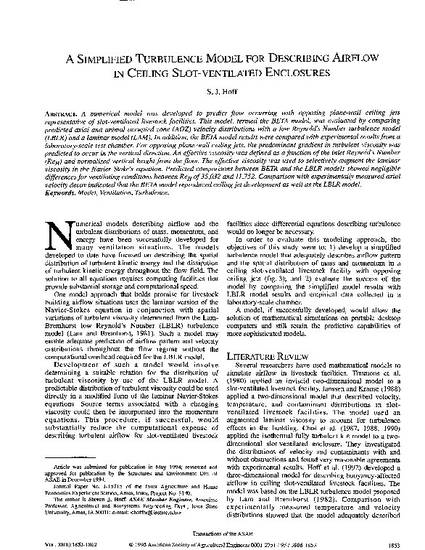
A numerical model was developed to predict flow occurring with opposing plane-wall ceiling jets representative of slot-ventilated livestock facilities. This model, termed the BETA model, was evaluated by comparing predicted axial and animal occupied zone (AOZ) velocity distributions with a low Reynold’s Number turbulence model (LBLR) and a laminar model (LAM). In addition, the BETA model results were compared with experimental results from a laboratory-scale test chamber. For opposing plane-wall ceiling jets, the predominant gradient in turbulent viscosity was predicted to occur in the vertical direction. An effective viscosity was defined as a function of the inlet Reynold’s Number (ReH) and normalized vertical height from the floor. The effective viscosity was used to selectively augment the laminar viscosity in the Navier-Stoke’s equation. Predicted comparisons between BETA and the LBLR models showed negligible differences for ventilating conditions between ReH of 35,032 and 11,752. Comparison with experimentally measured axial velocity decay indicated that the BETA model reproduced ceiling jet development as well as the LBLR model.
Available at: http://works.bepress.com/steven_hoff/12/

This article is from Transactions of the ASAE 38, no. 6 (1005): 1853–1862.